
|

songs of Goddess Worship
Aphrodite
***Aphrodite: Goddess of Love***
I will sing of stately Aphrodite, gold-crowned and beautiful, whose dominion is the walled cities of all sea-set Cyprus. There the moist breath of the western wind wafted her over the waves of the loud-moaning sea in soft foam, and there the gold-filleted Hours welcomed her joyously. They clothed her with heavenly garments: on her head they put a fine, well-wrought crown of gold, and in her pierced ears they hung ornaments of orichalc and precious gold, and adorned her with golden necklaces over her soft neck and snow-white breasts, jewels which the gold- filleted Hours wear themselves whenever they go to their father's house to join the lovely dances of the gods. And when they had fully decked her, they brought her to the gods, who welcomed her when they saw her, giving her their hands. Each one of them prayed that he might lead her home to be his wedded wife, so greatly were they amazed at the beauty of violet-crowned Cytherea.
~Homeric Hymn to Aphrodite, translated by N. S. Gill~ |
 |
I've lost my hatred of Aphrodite, but I came grudgingly to my respect, which makes it all the deeper. Aphrodite is not the flighty fluffy thing that classical Hellenic myth appears to portray with stories like the one about Aphrodite's work ethic. You see, the Fates alotted Aphrodite one divine duty, and one only: to make love. Perhaps sex got old for her, perhaps she had a headache, who knows, but one day Athena found her at a loom. Athena immediately complained that her territory was being violated, and threatened to abandon the loom and everything that went with it. Aphrodite, not wanting to be stuck with too much to handle, apologized profusely, and never did a day of work after that. But that is NOT all there is to this Goddess. Read on.
To tell you the truth, I am beginning to like Aphrodite - she is much more multifaceted than I gave her credit for. She has angles I wasn't aware of before I did some real research. She was a dark goddess as well as a seemingly bubbly goddess of love. There are many stories about her, the classical ones being the most well-known, and though patriarchal in nature, still smack of the power of women.
|
The Birth of the Love Goddess | Adonis | Marriage | Realm of Love | The Faces of Love: Epithets of Aphrodite
Birth of the Love Goddess
|
| The story of the Goddess's birth has a couple of different versions, but the most famous fits her name the best. Aphrodite, Foam Born, rose naked from the Sea on a scallop shell. Blown by the gentle East Wind, Aphrodite's first stop was on the island of Cythera, and therefore her name Cytherea. But Cythera was such a tiny island that Aphrodite kept moving and eventually got to Cyprus, where she began living in Paphos. Cyprus still has the largest Aphrodite cult found, and the goddess Kypris is an epithet for Aphrodite. The temple to Aphridite Urania (either "Mountain Queen" or "Heavenly") is, for Greeks, the most sacred of all of Aphrodite's sanctuaries. At the temple, the Goddess is represented in an armed image of wood.1 This story of Aphrodite's birth is by Hesiod, who wasn't really Greek at all, but it has become he accepted version. |
 |
Robert Graves' telling, "long been acclaimed as the definitive version," says that the Horae, or the Seasons, the daughters of Themis, were the ones who clothed and waited on Aphrodite at Paphos. He makes no mention of the Charites (the Graces) attendance to Aphrodite. Graves is ... interesting, if not always strictly adhering to evidence, but in this case, he gets his info from an ancient source. However, the Charites were companions of Aphrodite, and once they (the three and Aphrodite) got into a fight about who was the most beautiful.
At any rate, the idea that she rose from the sea is accepted, as is the idea that she rises into the air attended by doves and sparrows. Many believe she was begotten of Uranus's genitals when they were thrown into the sea after being cut off by Cronus. Others call her daughter of Zeus and Dione, and others call her the daughter of either Oceanus and Tethys or Air and Earth. There are many versions of her parentage. |
 |
| Marriage |
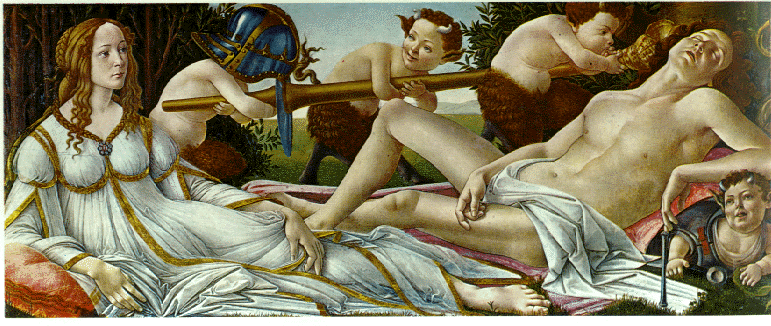 |
Aphrodite was the first (and some say only) wife of Hephaestus, and there is a great story of how Aphrodite cheated on him with Ares, and then Hermes, Poseidon and Dionysus. She bore children to all of them except Hephaestus. She also bore Aeneas (yes, THE Aeneas) to Anchesis. To Hermes she bore was Hermaphroditus, the counterpart of Androgyne. There is more about them here. To Poseidon she bore Rhodus (Rose) and Herophilus (Lover of Hera). To Ares she bore Phobus (Fear, Deimus (Fearful, and Harmonia, but Hephaestus thought they were his. Even though Aphrodite was married to Hephaestus, her favorite lover was Ares. To Dionysus she bore Priapus - who had huge genitals given to him by Hera in disapproval for Aphrodite's promiscuity. Anyway, you can find the whole funny bit in the Myth Pages. |
Adonis
|
|
The Myth Pages are also where you can find the story of Aphrodite and Adonis. A story that everyone should know, as it is still referred to by "educated people." |
| Realm of Love |
 |
Aphrodite was in a Moon-Triad with the Bitch Hecate and the Cow-Eyed Hera. The story of her ascent from the sea is very very similar to that of Eurynome. Before the patriarchy took over - with Zeus and the Sky Gods- Aphrodite's power was much greater. Originally, orgiastic tendencies were respected and revered by everyone. They were holy and sacred, and so Aphrodite's position as the Great Goddess of Love and Desire was not one to be sneezed at. Her sex-orgies were "solemn," but later were viewed by the Hellenes as "adulterous indescretions." That was the way that I saw them too. Now, I stand corrected, with the proper respect for her sexuality. Aphrodite was the Goddess of Death-In-Life, and many of her titles seem to reach past the superficial Hellenic barriers. In Athens they remembered her as the Eldest of the Fates and sister of the < A HREF="./Others.html#Erinyes">Erinnyes. She was called Melaenis, Black One, which Pausanias explains away as a reference to the fact that most love-making takes place at night4. She was also called Scotia: Dark One; Androphonos: Man-Slayer; and even Epitymbria: Of the Tombs. She's not exactly the fluffy little cheerleader I first saw her to be.
The paintings above are: 1) "Venus Rising From the Sea" by Botticelli 2) "Venus Rising From the Sea" by Bouguereau 3)"Venus and Mars" by Botticelli 4)"Aphrodite Disrobing for the Bath" by Lord Leighton. The two statues surrounding the title are 1) a statue of Aphrodite and Pan and 2) a statue of just Aphrodite. If you want to know the sources, email me. |
| The Epithets of Aphrodite |
| Acidalia ~ so-called after bathing in the Boetian spring Acidalia |
Acraea ~ "of the height" Cnidian reference |
Amathusia |
| Ambologera ~ "postponer of old age" refers to her renewing baths |
Anadyomene ~ "born to the sea" |
Androphonos ~ "man-slayer" |
| Anadyomene |
Antheia |
Apaturia |
| Aphacitis |
Apostrophian ~ "rejecter" of sexual crimes1 |
Aracynthias |
| Areia ~ "warlike" used by the Lacedaemonians |
Argennis |
Callipygos ~ "beautiful buttocks" |
| Catascpoias ~ "spy" or "peeping" |
Cnidian ~ only non-Cnidians call her that, the Cnidians call her Euploia (see below) |
Colias ~ after a temple to Aphrodite in Colias |
| Ctesylla |
Cypria ~ born near the island of Cypris - bearded |
Cypris/Kypris ~ born near island of Cypris |
| Cytherea ~ born near the island Cythera |
Delia |
Despoena ~ "mistress" (generic) |
| Dionaea |
Doritidos ~ "bountiful," the most ancient Cnidian temple is to Aphrodite Doritis |
Epidaetia |
| Epistrophia ~ "she who turns men to love" |
Epitragia |
Epitymbria ~ "of the tombs" |
| Eriboea/Periboea ~ Cretan reference, story of Theseus |
Erycine ~ ancient Sicilian and Psophisian titles |
Euploia ~ fair voyage |
| Genetyllis |
Hecaerge |
Hippodameia |
| Idalia |
Limenia ~ "of the harbor" from the city Hermione |
Mechanitis ~ "deviser" for many are the devices men make because of her |
| Melaenis ~ see above |
Melinaea |
Migonitis ~ "conjugal union" after a temple constructed by Alexander after sleeping with Helen there |
| Morpho ~ "changing," self-explanatory |
Nikephoros ~ "bringer of victory" dedicated by Hypermnestra for her acquittal |
Nymphia ~ "bridal" made by Theseus when he married Helen |
| Olympian ~ once the patriarchal Hellenes took over, they incorporated the powerful area Goddesses into their Olympian pantheon |
Pandêmos ~ "common" or "vulgar" referring to intercourse |
Paphia ~ sexual love |
| Peitho ~ Persuasion |
Pelagia ~ relating to her pre-Hellenic roots and the sea |
Philia ~ Love |
| Pontia ~ of the Deep Sea |
Praxis ~ "action" 5 |
Scotia ~ see above |
| Urania ~ Heavenly, as a pure lover free of bodily lust3 |
Zephyritis |
Zerynthia |
|
|
Heading 2
***Artemis: Goddess of the Hunt***
Congratulations, you have good taste. This page is about one of my favorite goddesses. She is a strong protectress, aware of her own power - and not likely to let anyone take it from her. Artemis, endowed with the precociosity of all the gods, sat on Zeus' knee not long after her birth and demanded of him a long list of things: 50 lop-eared hounds, 50 wood nymph followers, a silver bow with painless silver arrows, and his word to never force her into marriage. Not bad . . .
Alright, I am going to organize this page by story, click on one of the titles below, if you are looking for a specific one, but otherwise, just go ahead and browse.
The Birth of the Twins | Actaeon and Other Idiots | Loyalty to Leto | Protectress of Maidens? | DON'T INSULT A GODDESS | Leader of the Pack | Orion and Artemis
The Birth of the Twins
Artemis (as well as her twin brother, Apollo) was the daughter of the goddess Leto and the Big Dude (Zeus). Now, Hera wasn't too happy about her hubby, Zeus, messing around on her like that, and sent all sorts of horrible things after Leto (like a Gadfly and a scary dragon/serpent named Python. She also made a decree that Leto could not be allowed to rest anywhere on solid ground. Eventually, Leto made it to the island of Delos (which wasn't called Delos) and could rest there (as it escaped Hera's decree that Leto couldn't rest on solid ground, it was a floating island). But even there, Hera forbid Ilythia, the Goddess of Childbirth, to come to her. Eventually, the gods bribed Hera with a beautiful necklace, and Eilithia went to Leto. Some stories say that Artemis, the first born, was a relatively easy birth, but her brother definitely wasn't. And so immediatly after she was born, Artemis became her mother's midwife and after like nine hours, brought her brother into the world. So, since then, Artemis has been considered a Protectress of Childbirth. Other Classical stories say that she and Apollo were born at the same time, and don't mention her delivering her brother.
Great! Now you know the Classical story. Really, it's the only story people bother to tell anymore. However, it's not the only story that exists. In fact, even though Artemis seems pretty overshadowed by her brilliant brother, there was a time when they weren't even considered siblings. Apollo has always been a Greek God, but Artemis was a Goddess who came from a lot of different cultures. For instance, earlier myths place her as the daughter of Dionysus and Isis or of Zeus and Persephone. It was a while before people started making her Apollo's twin, but once they did, her power seems to pale a bit.
Artemis' Bad Side
Even though Artemis had sweet and loving beginnings, and indeed, she could love most intensely, she could also be very cold and unforgiving. This is a very god-like trait that every god and goddess (barring Hestia) has, at some point, displayed. One well-known story of her chilly personality has to do with the hunter Actaeon. This story, by the way, has a longer and better written version in the Myth Pages. But I digress. So Artemis had just had a long day of hunting, and was sweaty and gross, and ready for a nice bath. This was deep in the woods in a sacred pool, and it wasn't very likely that anyone would come upon her. But people of Actaeon's family had a history of bad luck, and he did just that. Now, every man knows that if you see a naked goddess (unless it is Aphrodite, or she invites you to see her naked) you run away, and PRAY that she doesn't notice. But either Actaeon wasn't very bright or he was so enraptured by her beauty that he didn't move. What he did was stare. Bad idea. Artemis heard him, turned around, and in fury threw water at him. As the thre droplets hit him, he was transformed into a stag. At that, Artemis whistled for his hounds, and they ripped their unfortunate master apart.
|
 |
Loyalty to Leto
Artemis and her brother were passionate. And one person they both loved dearly, beyond each other (for their bond was almost comletely unbreakable), was their mother Leto. The twins loved and defended their mother with a passion unparalleled, and woe to the god or mortal who offended her. One such woman was named Niobe. Now, I have little pity for Niobe, because she was just stupid. She had the gall to complain loudly that people paid too much respect to Leto. She cried that Leto had only two children, where she had seven boys and seven girls. Hmmmm. Not for long, smartgirl. Once the twins heard they came to her house and Apollo shot everyone of the boys with his golden arrows of extreme pain. Artemis shot the girls with her painless silver arrows, and they all lay down on their beds and died. Some stories say that the youngest girl, Chloris, was spared, but it is unclear why. Niobe wept uncontrollably, and I think some kind god turned her into a rock.
Protectress of Maidens?
There are two versions of this story, but the more well-known, and generally accepted version, is pretty grim. It has to do with Iphigenia. During the Trojan War Agamemnon severely pissed off the Twins (something about stealing a priestess's daughter). And in addition to her brother's other demands, Artemis required that the King sacrifice his daughter (Iphigenia). Now, this is all well and good - and somewhat godlike - except that Artemis is the Protectress of Dewy Youth and Maidenhood, and that is definitely not great protection. So, Iphigenia is put on the altar and sacrificed. Boo. The other version, that I dearly hope was the more accepted version back in the day, was that Artemis substituted a deer in the girl's place.
DON'T INSULT A GODDESS
Like most goddesses, Artemis was not a happy camper when she was insulted. It is a generally good rule to follow, that one should not insult the gods by calling them names or even by comparing oneself to their beauty, skill, or anything else. The same rule applies with most nymphs. One idiot in particular, named Chione, bore the penalty for daring to compare herself to Artemis. She asked Apollo to tell her she was more beautiful than the goddess. This he would not do (smart man), but Artemis found out, and shot Chione.
Leader of the Pack
In addition to being a strong goddess in her own right, with all the foibles that accompany that, Artemis was also the leader of a band of wood nymphs (Draiads). These nymphs, like Artemis, were sworn to chastity and stuff. So when they got raped, or chose to mess around, there were some pretty serious consequences. One story is that of Callisto. Callisto had the misfortune to be raped by Zeus, and Hera turned her into a bear that Artemis promptly shot. There are a few questions about whether or not Artemis knew who she shot, but most people think she knew. Or at least I think so. There are other nymphs and women who suffered similar fates, but I will not go into them.
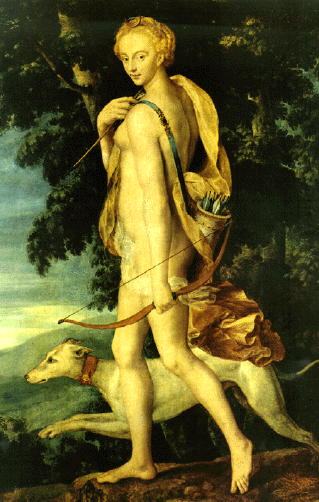 |
Orion and Artemis
I will not tell the whole story of Orion here, since there are many myths connected to him. Instead I will only discuss his relationship with Artemis. In my favorite version, Artemis starts really digging hanging out with Orion 'cuz he's like super-hunter dude. Now, Orion was sleeping with Eos - who was known for digging on guys already - and Apollo got worried about the chastity of his sister, and started worrying that Artemis would be as taken in as Eos. That doesn't really appear to be the case, but Apollo was jealous, so he went and arranged with Gaia to send this crazy big scorpion after him. Now, some say that this animal was just too much for Orion and killed him (and that Artemis was pissed for a while, but relented when Apollo helped her hang Orion in the sky). Another version says that Orion ran away from the scorpion - or rather, swam away to Eos' island, hoping that the Goddess of Dawn would protect him. But then Apollo told his sister that the figure bobbing in the sea was a villain who had just seduced one of her priestesses. Then he challenged her to hit the bobbing object. She did, and killed her friend unknowingly. She tried to get Asclepius to revive him, but Zeus destroyed him before he got the chance. And so ended Artemis' only romance before it could begin.
|
Not Quite Classical ... (more information than you probably want)
The myths above come mostly out of Classical mythology, and they reflect the society in which they were written - but if you're trying to really understand the depth of this goddess, you need to look a little further. As mentioned above, although the Classical stories peg her as Apollo's twin (where she tends to pale in comparison), she wasn't always a sibling. Like lots of other gods and goddesses (tho not Apollo, actually), Artemis seems to come from goddesses in a lot of different Mediterranean and eastern cultures, and she wasn't always as sweet as she appears for the Greeks. In some of her cults she was an orgiastic goddess, and in a few she required human sacrifice. Sound familiar? (See Iphigenia's story if you can't quite recall.)
| The Epithets of Artemis |
| Acraea ~ "high up" |
Aeginaea |
Aetole |
| Agoraea |
Agrotera |
Alphaea |
| Angelos |
Apanchomene |
Aricina |
| Ariste |
Aristobule |
Astrateia |
| Brauronia |
Britomartis |
Calliste |
| Caryatis |
Chitone |
Chrysaor ~ Golden |
| Cnagia |
Colaenis |
Condyleates |
| Cordaca |
Coryphaea |
Coryphasia |
| Corythallia |
Curotrophos |
Daphnaea |
| Delia |
Delphinia |
Derrhiatis |
| Diana ~ yep, that's her Roman name! |
Dictynna |
Eileithyia |
| Ephesia |
Eucleia |
Eurynome |
| Gaeeochos ~ protector of the earth |
Genetyllis |
Hecaerge |
| Hegemone |
Hemeresia |
Heurippe |
| Hymnia |
Iphigeneia ~ read this |
Issoria |
| Laphria |
Leogeneia |
Leucophryne |
| Limenia |
Limnaea |
Locheia |
| Loxo |
Lyceia |
Lycoatis |
| Lygodesma |
Lysizona |
Melissa - Honeybee |
| Munychia |
Mysia |
Oenatis |
| Orthia |
Ortygia |
Parthenia |
| Peitho |
Pheraea |
Phoebe |
| Phosphoros |
Pitanatis |
Saronia |
| Sarpedonia |
Soteira ~ savior |
Stymphalia |
| Tauropolis |
Thoantea |
Triclaria |
| Upis ~ Her name at the original temple to Artemis, set up by Amazons in Ephesus. Upis was also the name of the nymph that supposedly reared her, and also called the name of her father (in one story). Delian brides dedicated their hair to Upis (and Hecaerge). |
|
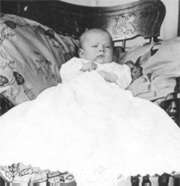 |
Heading 3
***Monstresses and Monstrosities***
Interested in monster myths? Then you should really check out the story of Heracles' 12 Labors, dontcha think?
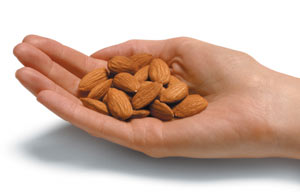
- Agdistis
- Agdistis was a totally awesome figure in mythology, and I'll probably move her to the goddess section soon, because she's really not so monstrous. It all started when Zeus had a wet dream and came on Gaia - that is, the ground. Gaia, fecund as we all know, got pregnant, and Agdistis soon emerged. She was born a hermaphrodite, but her bi-sexed body totally intimidated the gods, who feared that her body made her so powerful that she'd take over the world. So they cut off her penis. They buried it in the ground and it grew into an almond tree (think about THAT the next time you eat a handful of almonds) and the daughter of the Sangarius river came along and, according to Pausanias, put one of the almonds between her breasts (whatever floats your boat ...). Although this may seem a little unorthodox, the almond disappeared and - surprise surprise - Nana (the nymph) found out that she was pregnant. She had a child named Attis - who grew up to be a major hottie, and then Agdistis fell in love with him. Agdistis, apparently, was still pretty intimidating, and Attis' relatives weren't down with her, so they sent him off to marry a princess, but Agdistis showed up at the wedding in true romantic style. The only thing is, when she stood up to say, "Wait! You can't marry that girl, I love you!" (or whatever), instead of everything working out happily ever after, Attis went completely nuts. He ran into the wilderness and castrated himself and, as this story goes, bled to death. His spirit entered a pine tree, but Agdistis was less worried about the soul, and more worried about the body, and she asked Zeus if he could preserve the body eternally for her. It's a little kinky, if you ask me, but as we all know, Zeus is down with kink, so he agreed and they put the body in a tomb in the sanctuary of Cybele (Rhea). Eventually, Agdistis became an epithet of Cybele's. There were ceremonies replaying the whole Attis myth every year, and I hope to get the whole Attis myth in the Myth Pages one of these days.
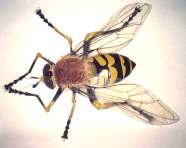
- Brize
- Brize was the Gadfly Hera sent after Io to torment her. This gadfly was the size of a sparrow with a stinger as big as a dagger. Hermes, who eventually was sent by Zeus to save the poor girl (or cow) killed the gadfly. If you want to know more, check out the Myth Pages. In case you didn't figure it out, Brize means Gadfly.
- Campe
- Campe was the jailoress in Tartarus who guarded the Cyclopes and the Hecatoncheires (the Giants). She was double-shaped, and female to her hips. From her chest to her thighs she was covered in fish scales. Over her shoulders a scorpion curled around itself. She was killed by Zeus when he freed the Cyclopes and the Giants to fight the Titans. Campe means "Crooked".
-
 |
Charybdis
Charybdis was once a nymph, the daughter of Poseidon and Gaia. And she flooded lands for her father's underwater kingdom until Zeus turned her into a monster (for stealing and eating some of Heracles' sheep - well, they were really Geryon's sheep, check it out in the Myth Pages) and had her suck in and out water three times an day. She lived in a cave on the Sicilian side of the Strait of Messina, opposite the monster Scylla (see below), the two of them forming a dangerous threat to passing ships. She probably explained a whirlpool. Odysseus managed to avoid Charybdis in the Odyssey. This is great: Charybdis literally means "sucker down". |
Chimaera
- The Chimaera was one part lion to one part goat to one part snake/dragon, and even though we're relatively comfortable with her looks, her parentage is under question. Homer asserts that she was bred by some dude named Amisodarus, but for once I'm gonna go with Hesiod, who says she was one of the many children of Echidna (see below) and Typhon. There are different versions of how these animals were put together to create her, so whatever your imagination says is probably right. As she was like super-monster, she was having a pretty good life just wandering the countryside, killing sheep every once in a while - and there wasn't gonna be anyone who tried to stop her - did I mention that she breathed fire? Yeah, that, too. But this one chick, Sthenoboea, caused all this drama, and made one dude try to kill this other heroic-type dude, named Bellerophon. Wait, you're thinking, what about Chimaera? Well, Dude Number One thought that the best way to get away with killing Dude Two (Bellerophon) would be to insist he go against (ie, kill) the terrible monster that was ravaging the countryside. Turns out our chica wasn't a match for the heroic Bellerophon (who, by the way, was riding the flying horse, Pegasus, that sprang out of the dead Medusa's body - read more about Medusa below). The hero had a lead spear, which wasn't too effective against Chimaera until he stopped trying to use the pointy aspect of it. Instead, he jammed it down her throat, and her fiery breath melted the lead which poured into her stomach and killed her. Alternatively, he just shot her with an arrow from far away, but I think the first version is better.
|
 |
- Delphyne
- Delphyne was a female dragon. A "half-bestial maiden," as Carlos Parada puts it, who guarded the sinews of the hands and feet of Zeus after her brother Typhon severed them. With the help of Pan's screaming and Hermes' quick fingers, Zeus recovered his tendons. She was eventually killed by Apollo when he took over Delphi (where she guarded a fountain by the oracle). The word Delphyne means Womb. Hmmmmm. This couldn't possibly be an earlier version of Python as the chthonic goddess at Delphi before the patriarchy took over now could it? Nah.
- Echidna
- Echidna was called the mother of all monsters, but really she was only the mother of about six of them: the dragon that guarded the Golden Apples of Hesperos, the Hydra (the many-headed dragon/serpent), the Chimaera (see above), Orthus (a hell-dog), and Cerberus (a more famous hell-dog with three heads), the Crommyonian Sow, the Caucasus Eagle (that's the one that kept eating Prometheus' liver every day), and by her son Orthus she mothered the Sphinx (see below) and the Nemean Lion. Some people also say Scylla and the Gorgons (see below for both) were her kids, but I think they have other more likely parents. She was definitely a scary monster, half-woman half-snake, and she lived with her mate Typhon (the monster who challenged all of the Greek Gods, and ended up with Mt. Aetna thrown on top of him) in a cave in Scythia. Echidna was either the daughter of Callirrhoe and Chrysaor, the Gold Bearer, who was a son of Poseidon and Medusa (see Medusa below), or Styx and Peiras, or (as I prefer) Gaia and Tartarus. Echidna means She-Viper. There's one bizarre story that Heracles paid her a visit when Typhon wasn't home and they had a fling that produced these three future kings (apparently, they inherited none of their mother's monster genes). Another story says that she went to the Peloponnesus to harrass (eat?) travelers, and was there killed by Argus - but she was supposed to be immortal, so I don't really know how that worked.
- Elate
- Elate was a giantess, or one of the Aloadae, daughter of Aloeus and Iphimedea. Her brothers were Otus and Ephialtes, the ones who tried to take over Olympus. When her brothers were killed she couldn't stop weeping and so the gods turned her into a spruce tree out of pity. The name means literally "Fir Tree." And there is a Goddess of the same name.
- The Empousae
- These chicks were Greek demonesses and emmissaries of Hecate (as well as her daughters). They are also known for snatching children, and scourging the poor shades in the Underworld. These demonesses had one brass leg and one ass leg, and leathery wings and claws for hands. They were primarily bitches (dogs! primarily as a result of their relationship with Hecate), but they could take the form of cows and maidens as well (through Hecate's connection with Aphrodite and Hera). As maidens they slept with guys and sucked their life out of them. I only know one of their names and that is Empousa. Their name means "Forcers-In".

- The Gorgons
- There were three Gorgons, they were all sisters. Two of them were immortal, but Medusa wasn't (don't ask me to explain that one). She ended up getting her head chopped off and having an immortal flying horse jump out of her body, but you can read more about her below. The three were the daughters of Phorcys (the Sea God) and Ceto (a daughter of Pontus and Gaia). There names were:
- Medusa, her name means Ruler
- Stheno, her name means Forceful
- Euryale, and her name means Far-Roaming
They were so hideously ugly that they turned to stone anyone stupid enough to look at them. They were covered in golden scales with hissing and writhing snakes for hair. Their sisters, the Graiae, guarded their home from beyond the sea. Although Medusa fell under Perseus' sword, the other two Gorgons apparently lived on (being immortal and all).
-
 |
The Harpies
The Harpies were birds with women's upper bodies. Following tradition, there were three of them, they were:
- Aello or Aellopus, meaning Whirlwind or Storm foot
- Ocypete, meaning Swift Wing
- Thyella or Celaeno(though the last is sometimes excluded)
They were the daughters of the Nereid Electra and Thaumas, the son of Pontus and Gaia and they live in a cave in Crete. That made them sisters to Iris! These three sisters were always ravenously hungry. They were often called the Dogs of Zeus (Hades?). The name Harpy means "Snatcher." They were the ones that threw an entire country (Ethiopia I believe, no seriously!) into famine! The Harpies were regarded as storm winds (in the Odyssey), but were the Goddess Athena in her vengeful form before that. |
 Hippe Hippe
- Hippe was the daughter of Cheiron (the cool centaur) and was seduced (or raped) by Aeolus. She tried to go off by herself and just have her child, but Cheiron followed her. Then she tried asking the gods to let her have her baby in secret and they turned her into a constellation as, of course, a horse. By the way, "hippe" is Greek for horse. The daughter she bore was named Melanippe. The painting, called "Centaur Woman," is by Jill Johansen.
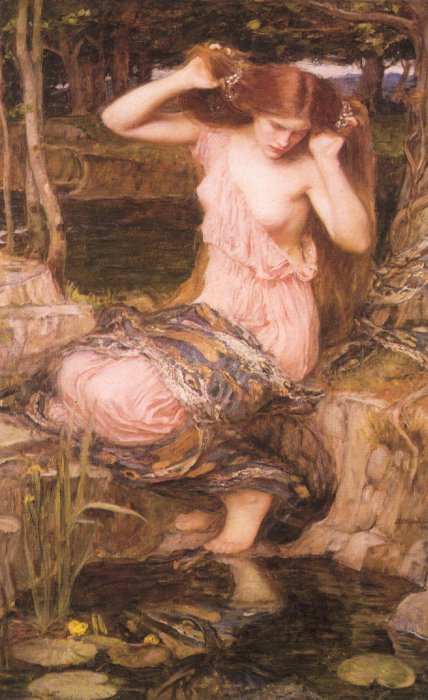
- Lamia
- Lamia was the daughter of Belus and a queen of Libya upon whom Zeus had bestowed the talent of being able to take out her own eyes whenever she wanted. She and Zeus had a serious thing going on, and she had lots of his kids, but Hera killed all of them except Scylla. Lamia went crazy and devoured all the children she could, becoming a demon (one of the Empousai, actually - see above). She would trick parents and then steal and eat their children. Her name, Lamia, means Lecherous. She is described later as a serpent with the head and breasts of a woman. On the right is a painting of Lamia as she is going insane.
 Medusa Medusa
- Medusa was the only mortal of the three Gorgons (see above), and apparently was born beautiful. But, as we all know, beauty passes - and it certainly did for Medusa. See, the story goes that she was a priestess of Athena's, but then she slept with Poseidon in Athena's temple. Now, Athena wasn't like her sister Artemis, she wasn't really against people having sex and whatnot - but there's a time and a place for everything, and inside the Virgin Goddess's temple wasn't it. Athena got pissed and turned Medusa into the freaky snake-haired lady we've all grown to know so well. She was also the mother of Pegasus, the winged horse - the question is how the horse was born. Did it, as many stories go, spring from the neck of Medusa when Perseus cut her head off (read that story here)? Or was the colt born before she died? Either way, Medusa had Pegasus, and Medusa died at the hand of Perseus who was sent out by his wicked uncle who hoped he would die fighting Medusa (as so many other heroes had).
- Mormo
- Mormo was a boogeywoman a lot like Lamia and Empusa, and she was used to frighten little children. The Mormolyceia took the form of beautiful women, seduced men, and then went vampire on them. Yum!
- Phaea
- Phaea was a monster (that Theseus killed) that appeared in the shape of a giant sow. (Yes, that's a female pig). The name, Phaea, means Shining One. She came from an early cult (Demeter as the White-Sow) that was quickly suppressed in the Peloponnese. It really bothered myth-writers that Theseus would go so far out of his way to kill a sow, so some of them made her a boar and Plutarch makes her a female bandit nicknamed "Sow".

- Scylla
- Scylla grew up a beautiful maiden nymph, the daughter of Phorcys and Ceto. One day while she walked along the water's edge a man turned sea-god, Glaucus, spotted her. He lusted after her, but, in she did not return that love. A jealous Circe, who was in love with Glaucus herself, got pissed and used herbs to magically poison the water and transform poor Scylla. She was human to the waist, but below that were biting snapping dogs. She had become a monster. She sat on the Italian side of the straits of Messina gobbling up anything that came within her reach. In The Odyssey, Odysseus manages to avoid Charybdis (see above), but loses six men to Scylla. Scylla probably explained a partially submerged rock that ships foundered on. There is also a human named Scylla, in case you came here by mistake. Scylla means "She who rends". The painting is of Scylla and Circe, by John Melhuish Strudwick.
- Scythian Monster
- The Scythian Monster was half maiden half serpant. She refused to give Geryon's cattle to Hercules unless he agreed to have intercourse with her. As a result, little Agathyrsus was conceived. As well as Alcaeus, Gelonus, and Scythes (the first King of Scythia).
-
The Sirens
- Their name means those who bind, and it is very appropriate. The Sirens were beautiful half fish half woman daughters of Phorcys and Ceto who sang so beautifully that any man who heard them was compelled to jump off of his ship (they lived on rocks in the sea) and swim to them. Unfortunately, mostly they died in the rough water and those who didn't soon perished of hunger because they never moved from the Sirens. There were originally two of them, then three, and then more as writers just liked to add to them. They are most famous for their participation in the Odyssey. In this story, Parthenope, Ligeia and Leucosia sang to the men of Odysseus who were only saved by Odysseus filling their ears with wax, and binding himself to the mast so that he couldn't go to them. Later, in the story of the Argonauts, Orpheus saved the crew by playing VERY loudly. Their known names were:
- Aglaope, Beautiful Face
- Aglaophonos, Beautiful Voice
- Himerope, Longing Face
- Leucosia, White Being
- Ligeia, Shrill
- Molpe, Music
- Parthenope, Maiden Face
- Peisinoë, Persuading Mind
- Raidne, Improvement
- Teles, Perfect
- Thelchtereia, Soothing Watcher
- Thelxepeia, Soothing Words
- Thelxiope, Persuasive Face
The painting is "The Siren," by John Waterhouse. |
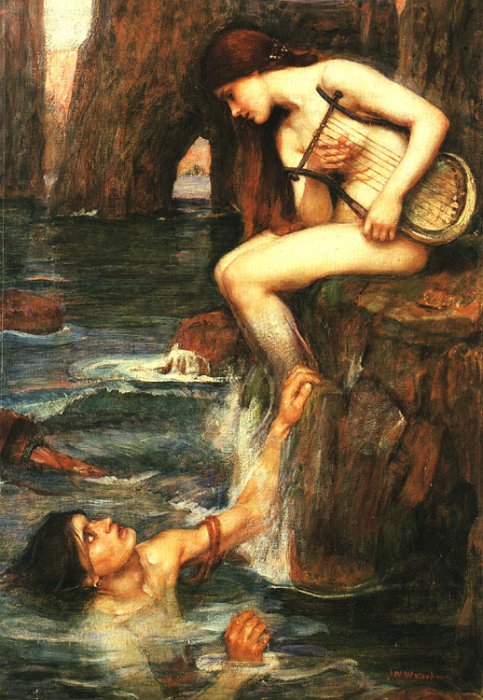 |

The Sphinx
- I'll bet you've heard of her! She was the riddler who was part woman part lion. She killed anyone who couldn't answer her riddles, but wouldn't let anyone through the gates she stood in front of unless they could (answer her riddle that is). When Oedipus finally did, Sphinx stopped terrorizing Thebes and went away. She was a daughter of Echidna (see above). Sphinx means "Throttler." The painting on the left is of the Sphinx and Oedipus and was painted by Boris Vallejo.
- Stymphalian Birds
- These man killing birds were gathered around a lake in Stymphalos. But then Heracles came along and killed all of them using noisemakers made by Hephaestus. Bye-Bye Birdies! They are mentioned in the Myth Pages' story of Heracles' 12 Labors.
- The Telchines
- The Telchines, Children of the Sea, were nine dog-headed, flipper-handed sisters who originated in Rhodes. They were the first inhabitants of Crete. They were very magical, the name Telchines means "enchanted", and did weather magic as well as raising magic mists and blighting crops with Stygian water. Zeus resolved to wipe them all out with a flood, but Artemis warned them, and they fled all over the world. In Orchomenus, they were the hounds that destroyed Actaeon (don't know that story? Read it in the Myth Pages), but they have not been heard of since. In Teumessus, Zeus did destroy the Telchines that had fled there, and Apollo in wolf-form killed the Lycian ones (despite their efforts to placate him with a new temple). Rumor has it that there are still some living in Sicyon. There are indications that they were emanations of the Moon Goddess Danae. They were worshipped by an early matriarchal people of Greece, Crete, Lydia, and the Aegean Islands (who were very persecuted by the Greeks of Classical Mythology). The fact that the Telchines used the water of Styx suggests that they were very powerful.
- Thoosa
- Thoosa was a daughter of Phorcys, this dude who had some seriously freaky kids. She was sort of a personification of the waves of the sea - which doesn't actually sound that scary, and apparently Poseidon wasn't too worried about it because he got her knocked up with Polyphemus (the Cyclopes who tried to eat Odysseus).
|
|
Comments and Suggestions
Please send an email for any comments and suggestions to
email@address.com
|
|
Questions
Please send an email for any questions to
email2@address.com
|
|
Heading 6
Insert Text for Header 6 Here.
|
|
Heading 7
Insert Text for Header 7 Here.
|
|
|
